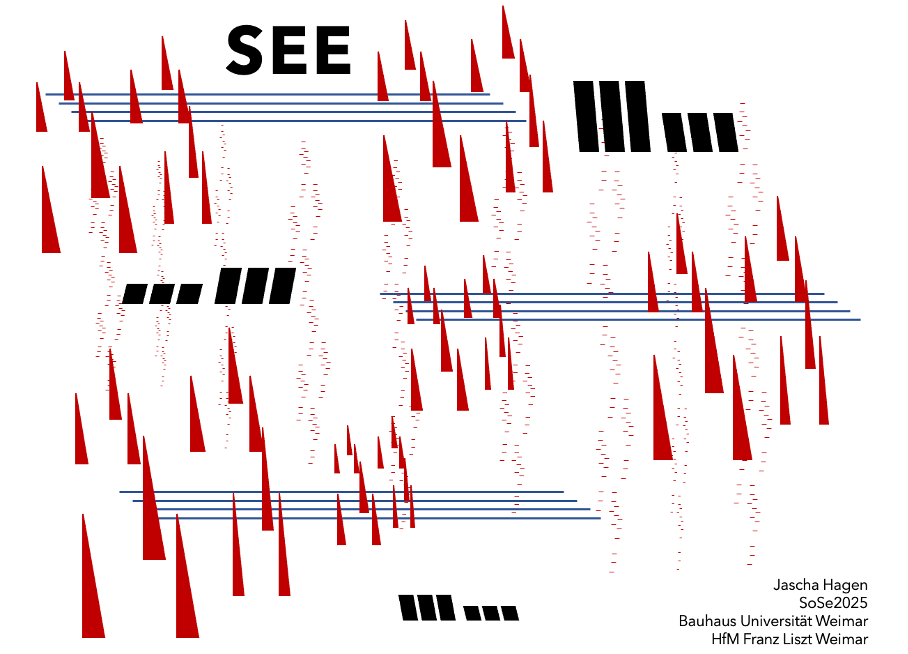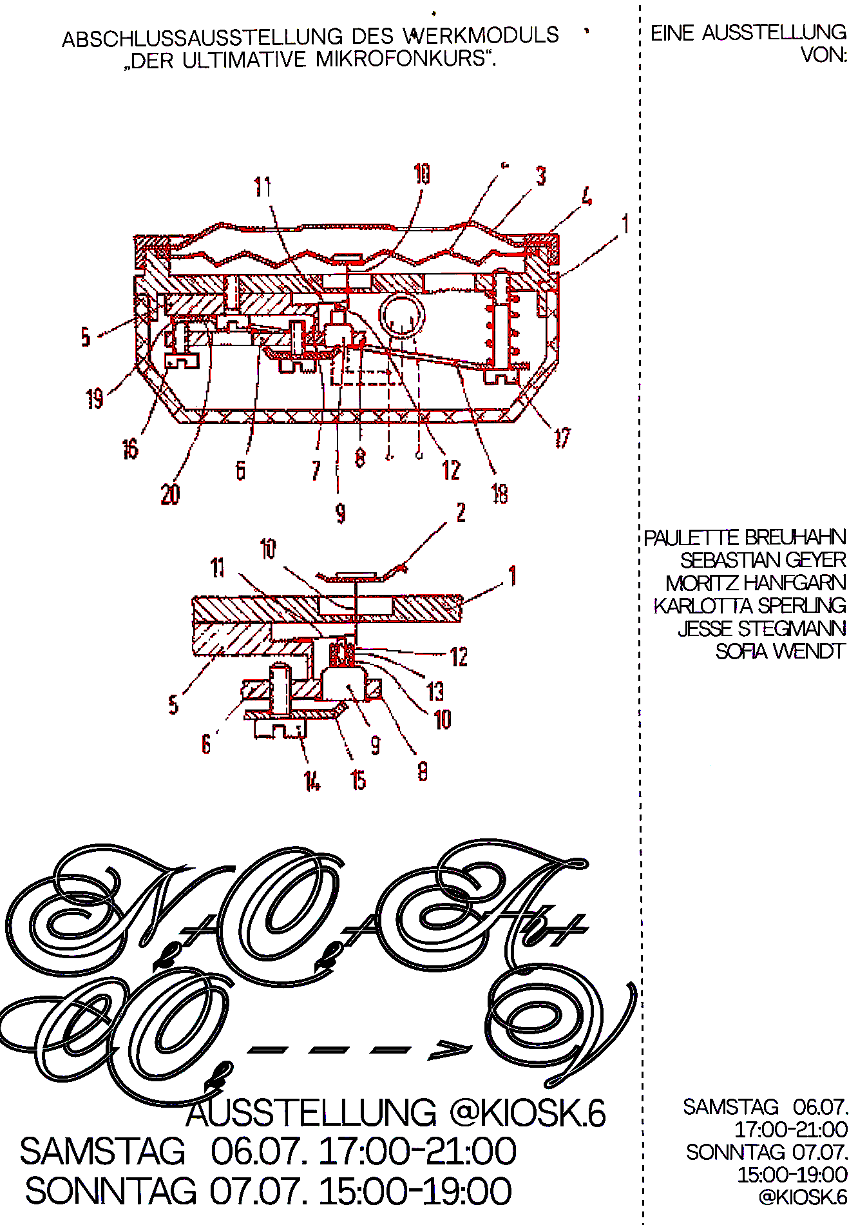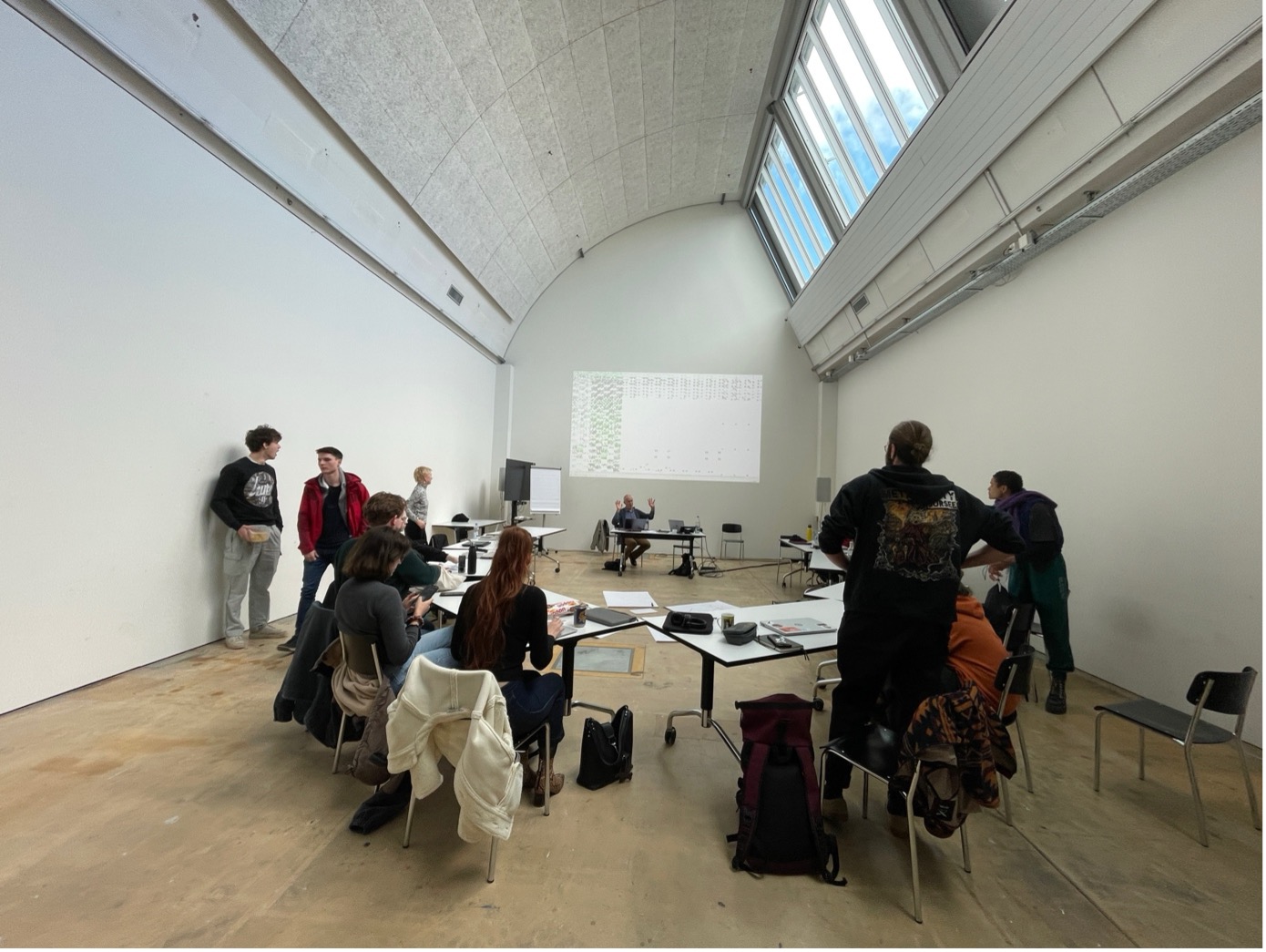JAKOB HAGEN / works / teaching / bio / contact
Since 2019, I have been actively teaching in the fields of electroacoustic composition and sound art. My work includes private consultations, workshops, and courses I have independently developed. Teaching engagements have taken place at institutions such as the Bern University of the Arts (HKB), the University of Music Franz Liszt Weimar (HfM), the Bauhaus University Weimar, and Moos in Berlin. A selection of these courses can be found below.
SEE - SeaM Experimental Ensemble
HfM Franz Liszt Weimar / Bauhaus University
SoSe 2025

The course served as a starting point for the formation of an Experimental Ensemble open to students from the University of Music Franz Liszt Weimar and the Bauhaus University Weimar. It brought together instrumentalists and composers interested in electroacoustic and experimental music.
Over the semester, participants met weekly to play, listen, and experiment with sound, exploring improvisation and live-electronic setups through a hands-on approach. The project concluded with a public concert and laid the groundwork for a self-organized, ongoing student ensemble.
All Ears On Me: Sound Composition In New Media Environments
HfM Franz Liszt Weimar / Bauhaus University
WiSe 2024/2025
The course explored how sound artists can navigate a media environment increasingly dominated by fast, short, and visually driven content. It asked how, in a landscape where fleeting images and quick videos capture attention, sound-based work can still be heard—and whether it is even desirable or possible to compete for attention in such a fast-paced, image-oriented space.
In an era where digital platforms prioritize immediacy and visual engagement, Andy Warhol’s famous statement might be rephrased: “I don’t care about fame, but can you listen to my music for fifteen minutes?”
Throughout the semester, the course examined evolving concepts of authorship, ownership, and authenticity within the media of the 21st century. Students engaged with contemporary artistic positions that sought either to integrate into the structures of platform capitalism or to resist its constraints. The focus remained on practice: participants created their own sound compositions, translating theoretical reflection into artistic experimentation.
The Ultimate Microphone Course
HfM Franz Liszt Weimar / Bauhaus University
SoSe 2024

Have you ever set a microphone on fire? Or immersed yourself in a bubble bath surrounded by hydrophones? Maybe you’ve tied a bundle of dynamic mics to the back of a speeding car—or wondered what sound a microwaved microphone might make?
This course plunged headfirst into the world of microphones, exploring every conceivable facet of these sonic devices. Participants built their own microphones, learning to solder and understand the intricate details of design and construction.
Beyond the technical, the course traced the microphone’s cultural and historical journey—from its origins in telecommunication to its use in propaganda and its omnipresence in contemporary life.
By the end, students had uncovered not only how microphones work, but also their boundless creative and sonic potential.
From Data to Art: from the emergence of digital information to the appropriation of its logic and forms of appearance in art
HKB Bern
SoSe2024

“Like air and drinking water, being digital will be noticed only by its absence, not its presence.” With this statement, Nicholas Negroponte, co-founder of the MIT Media Lab, declared the Digital Revolution over back in 1998—arguing that it had already become an inseparable part of everyday life.
Twenty-four years later, this course explored the depths of what we now call post-digitality, an era in which digital interactions permeate nearly every aspect of existence. But what are digital data, really? How did the binary code come into being? And how are data transformed into art today?
Through a media-historical and art-historical inquiry, participants traced these questions back to antiquity. The word digital itself derives from the Latin digitus—finger—and connects to the computus digitalis, the ancient culture of finger counting.
The aim of the course was to build a foundational historical understanding of computer science as a cultural field, enabling participants to better interpret and contextualize contemporary artistic positions.